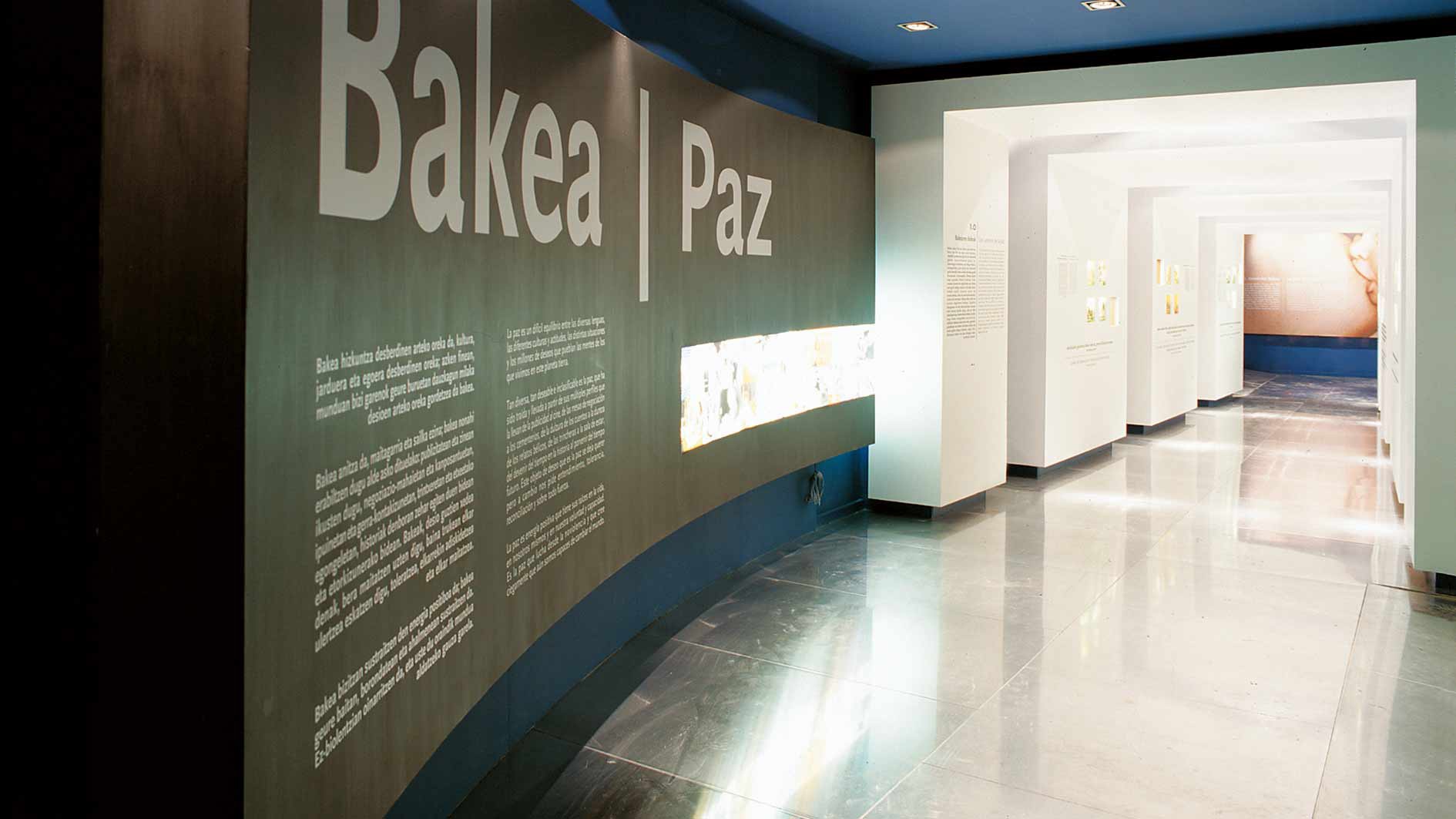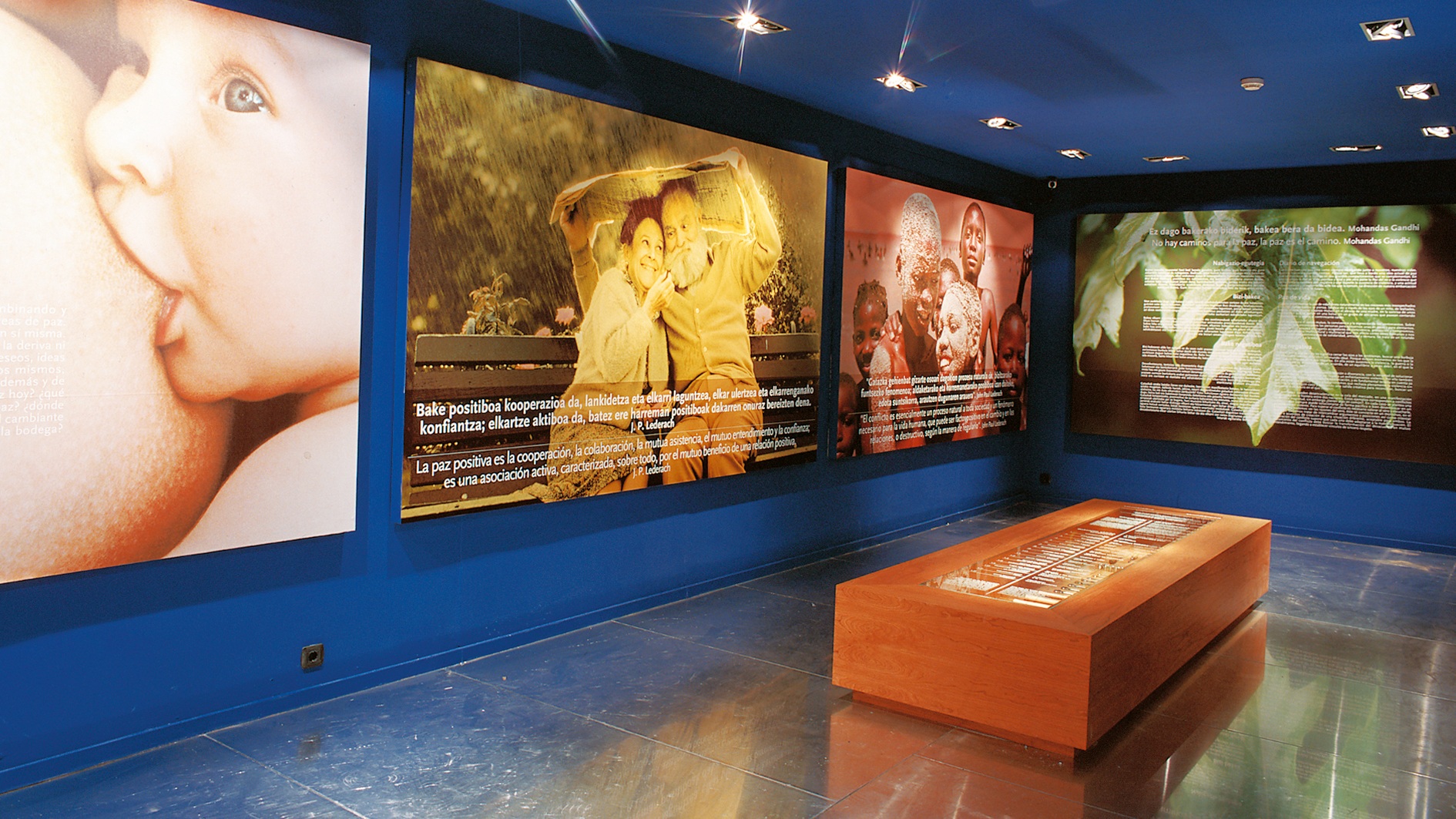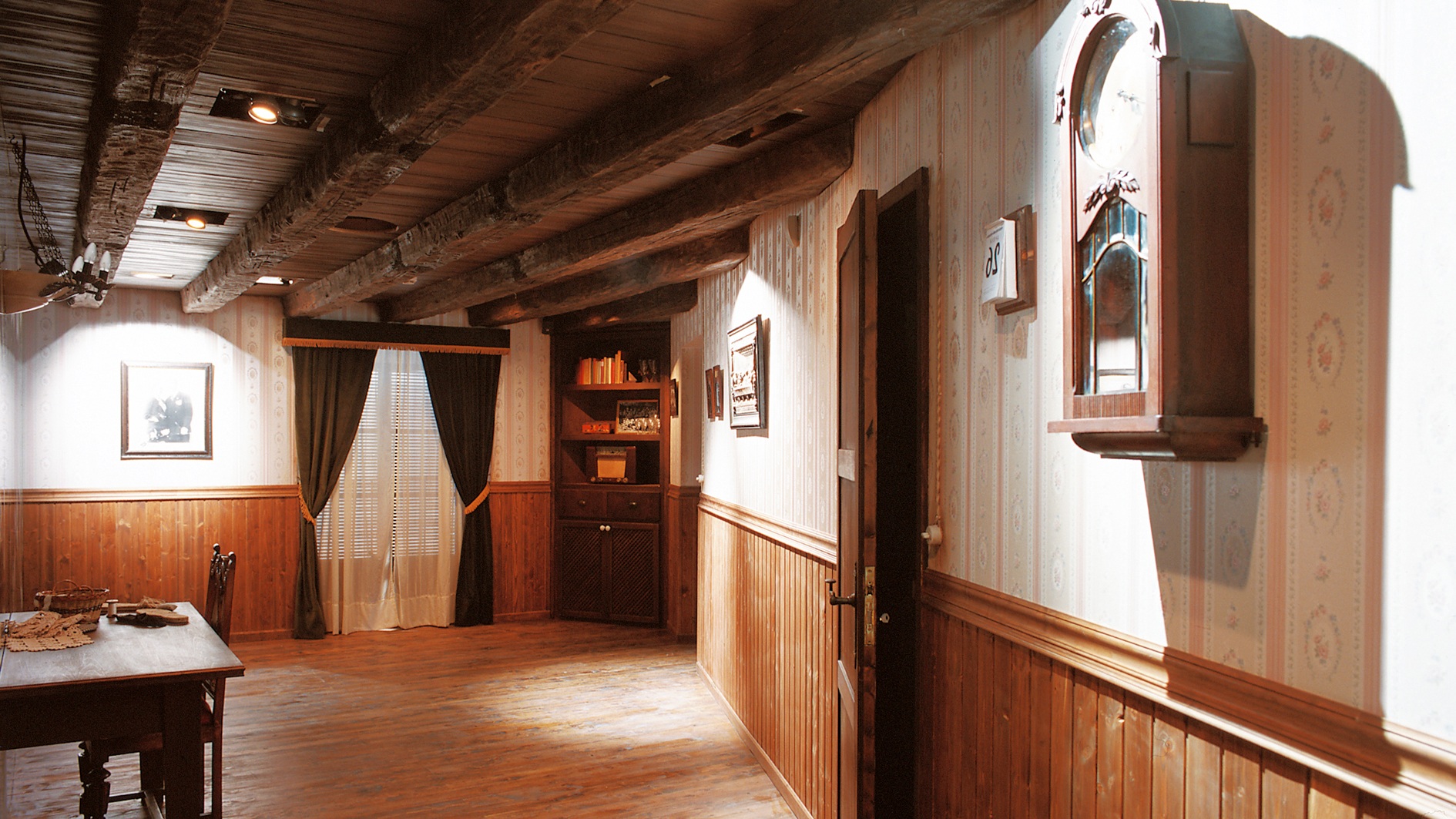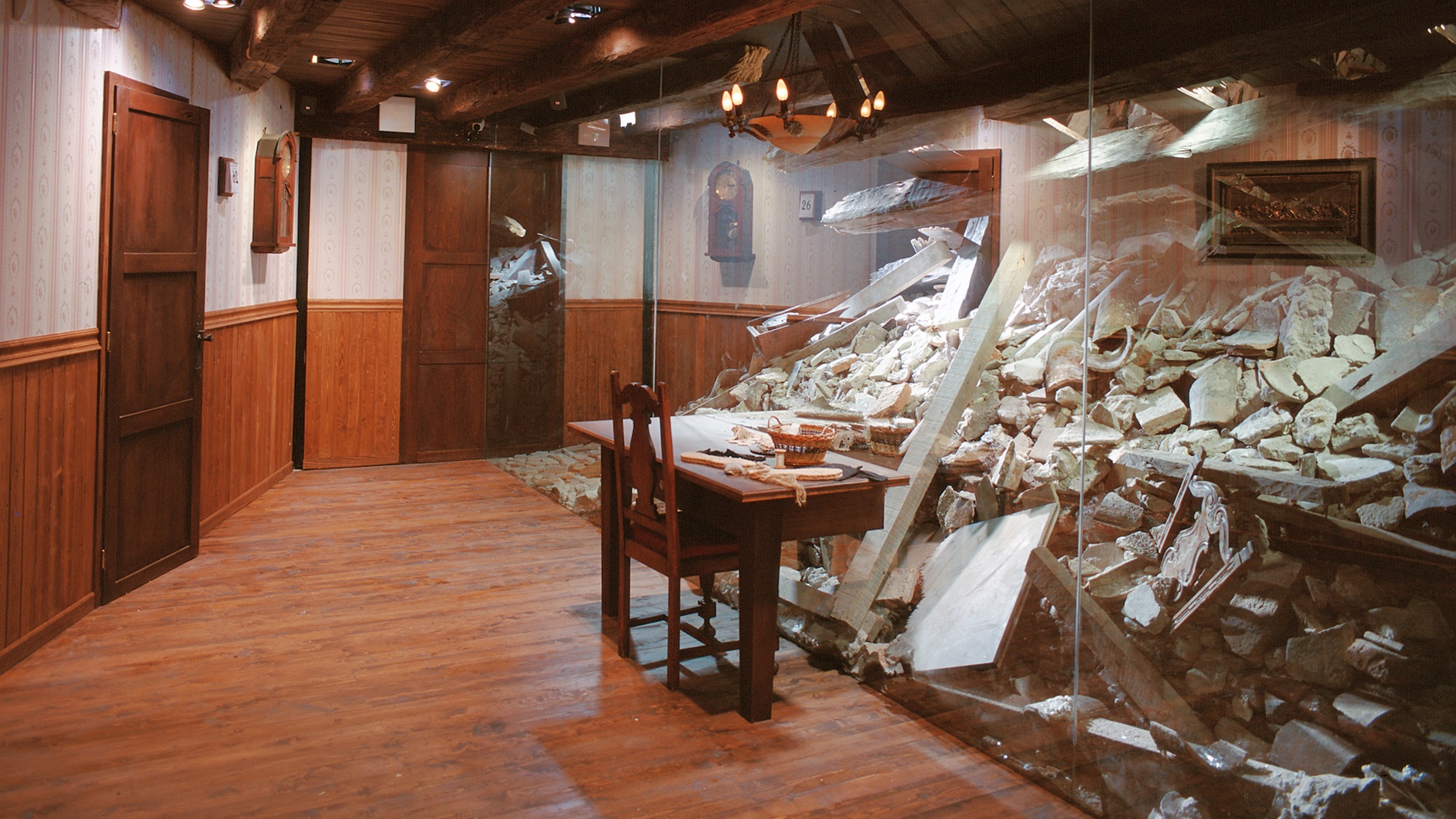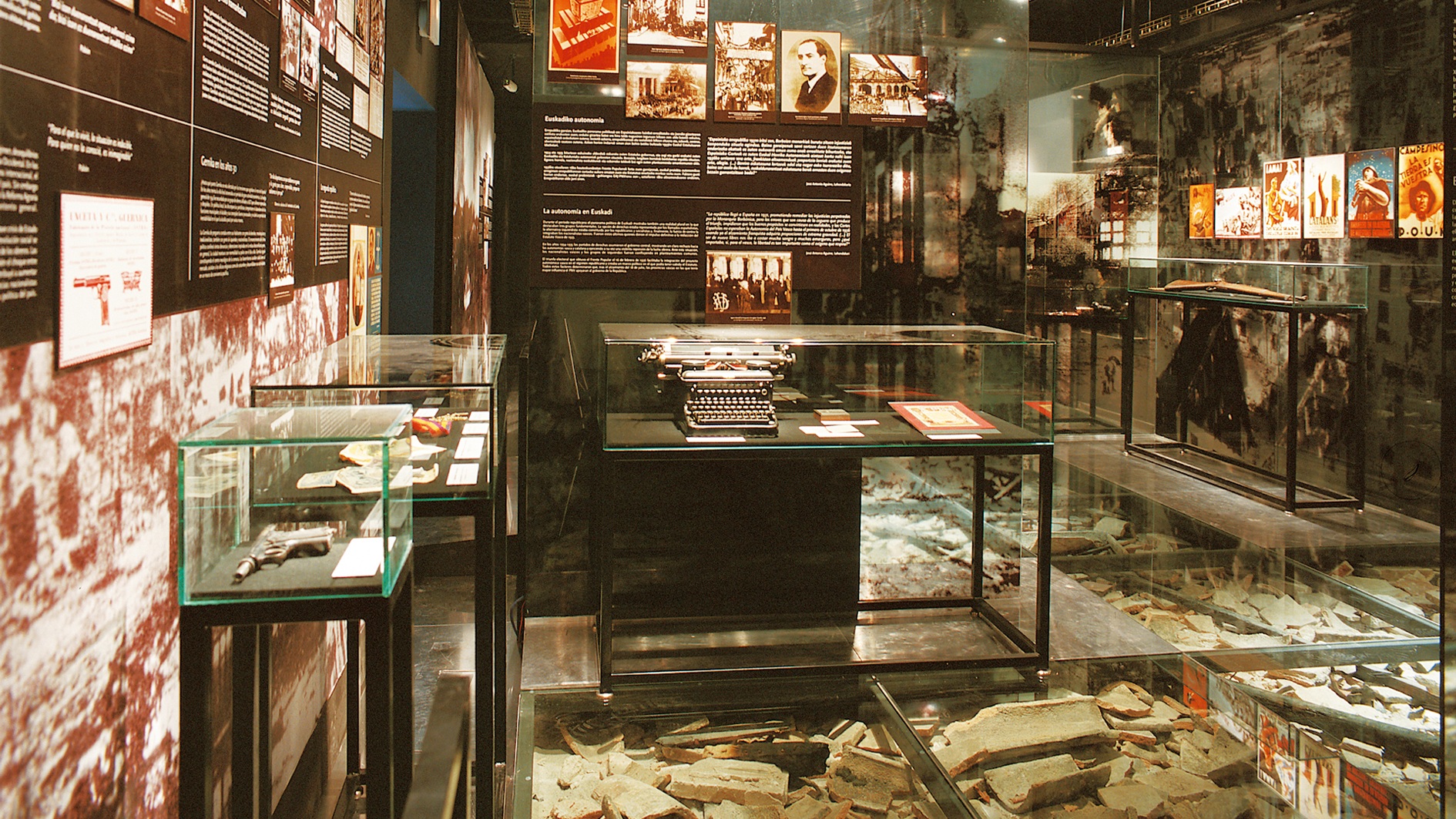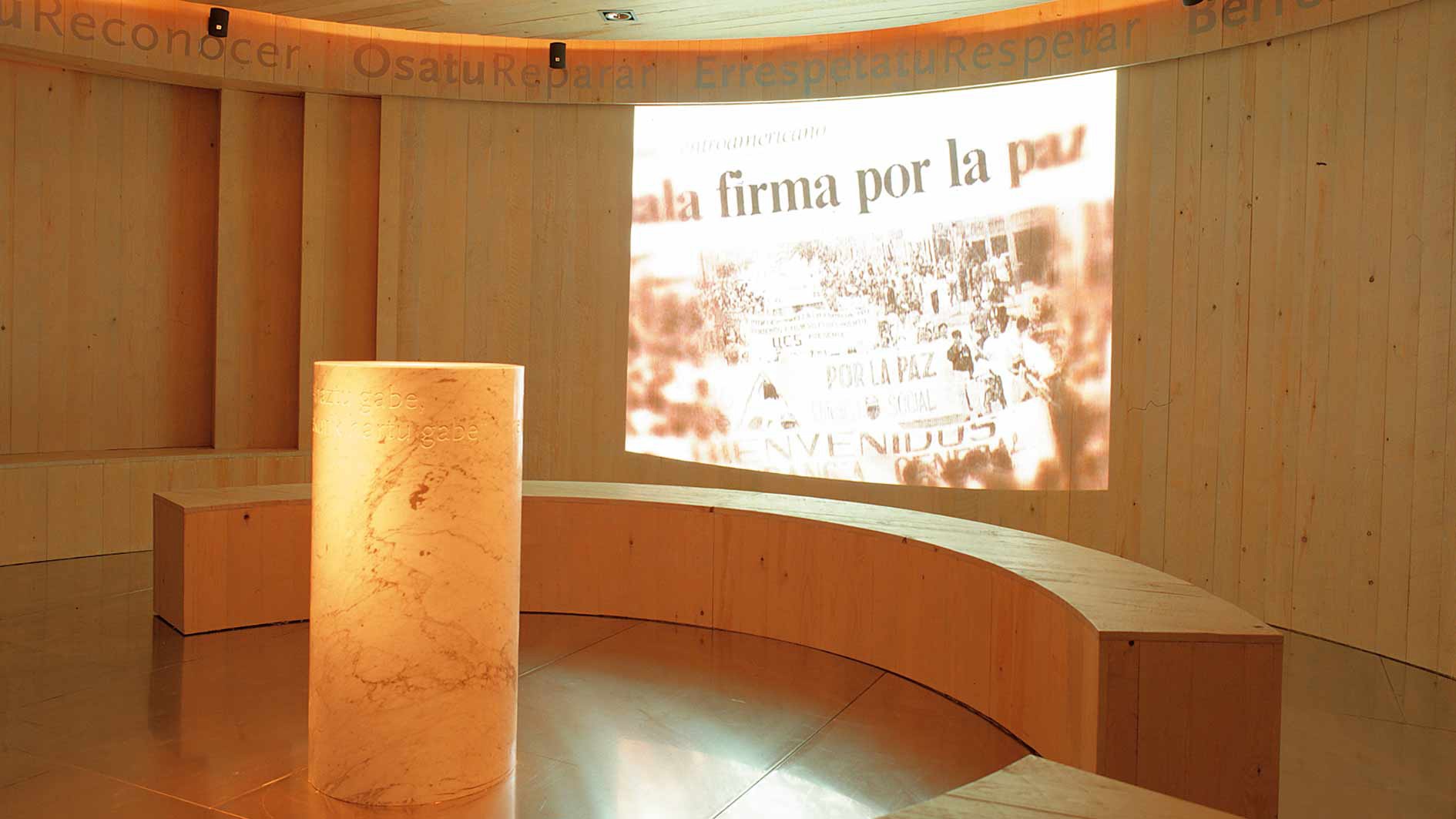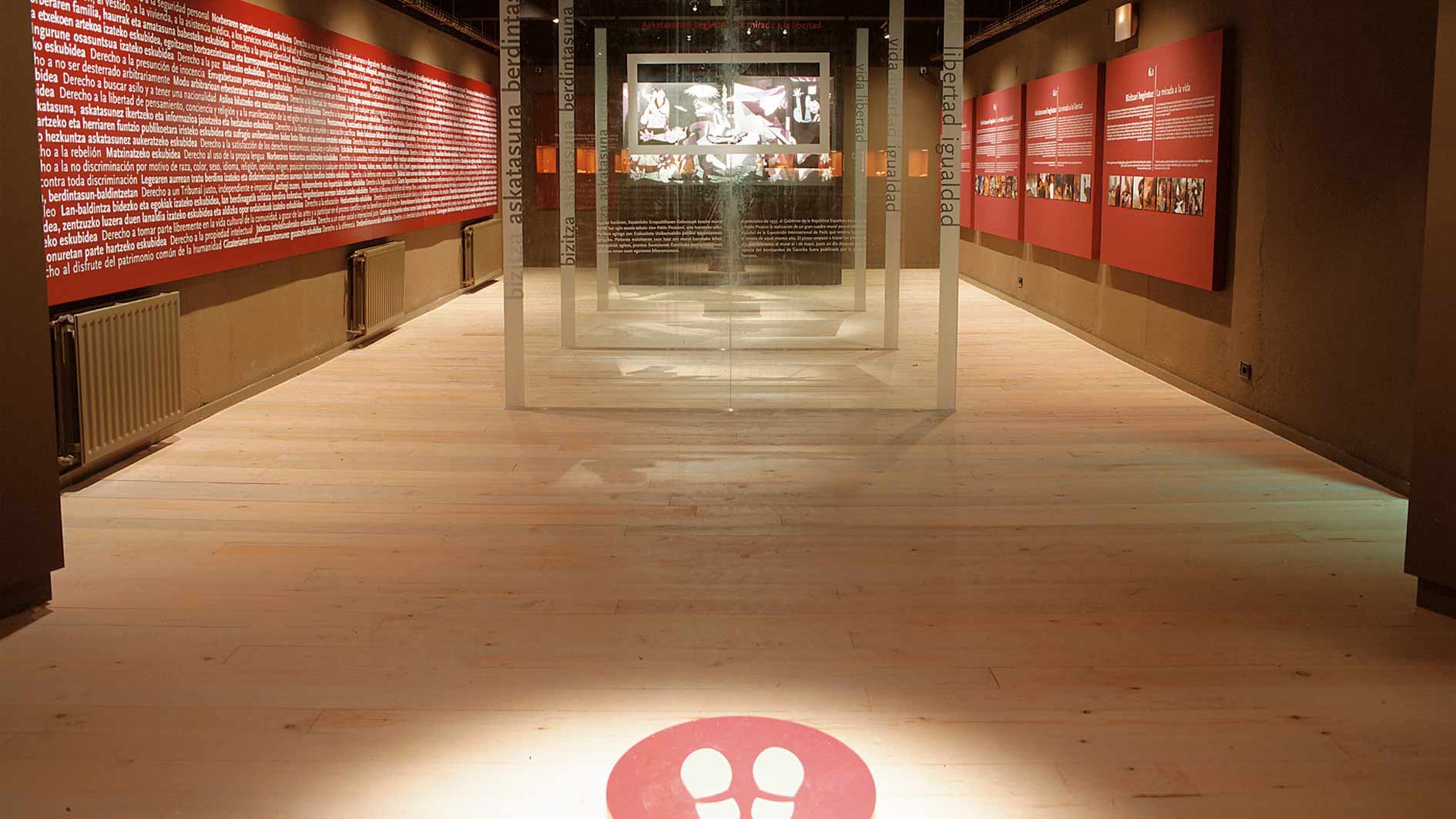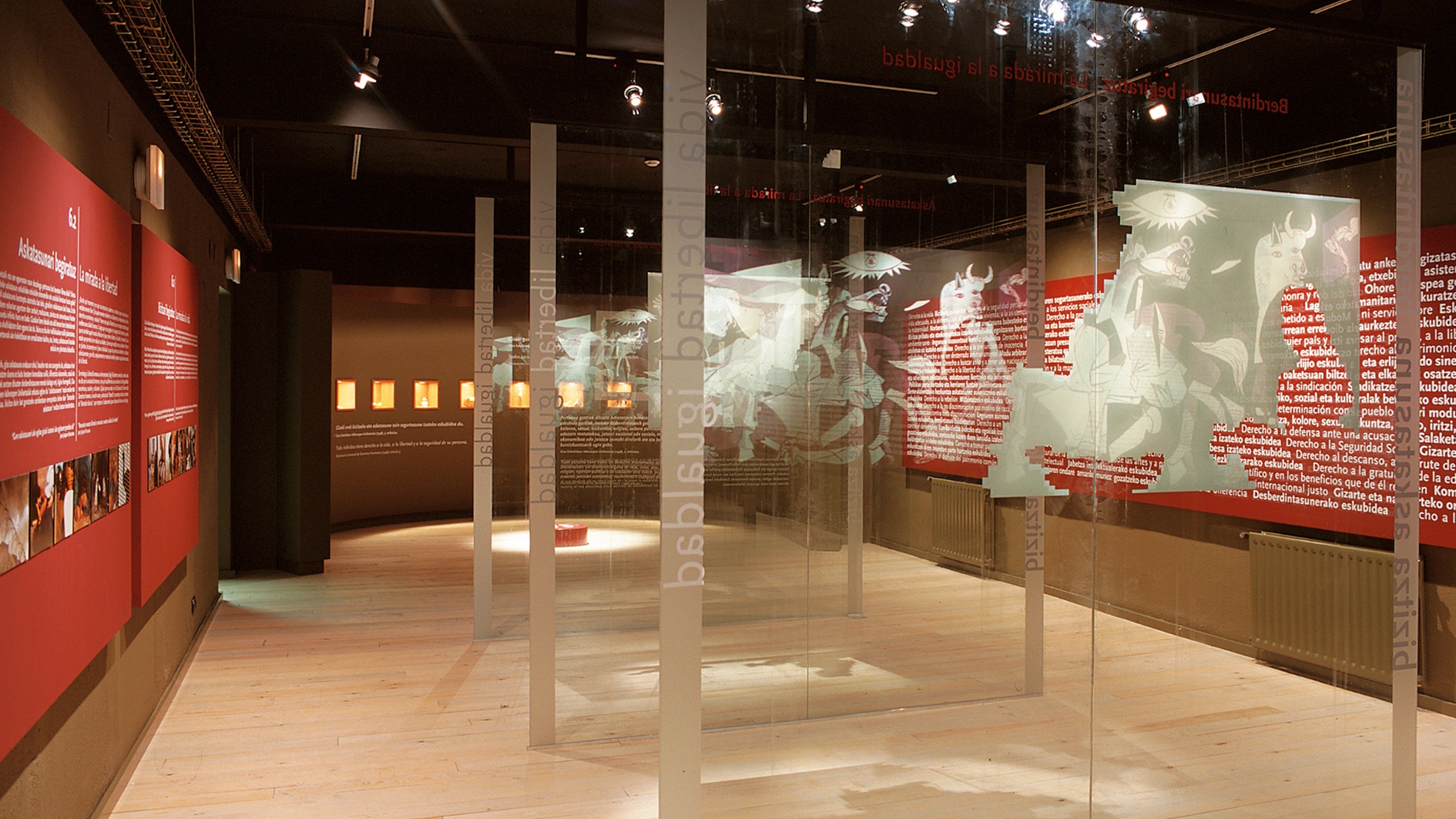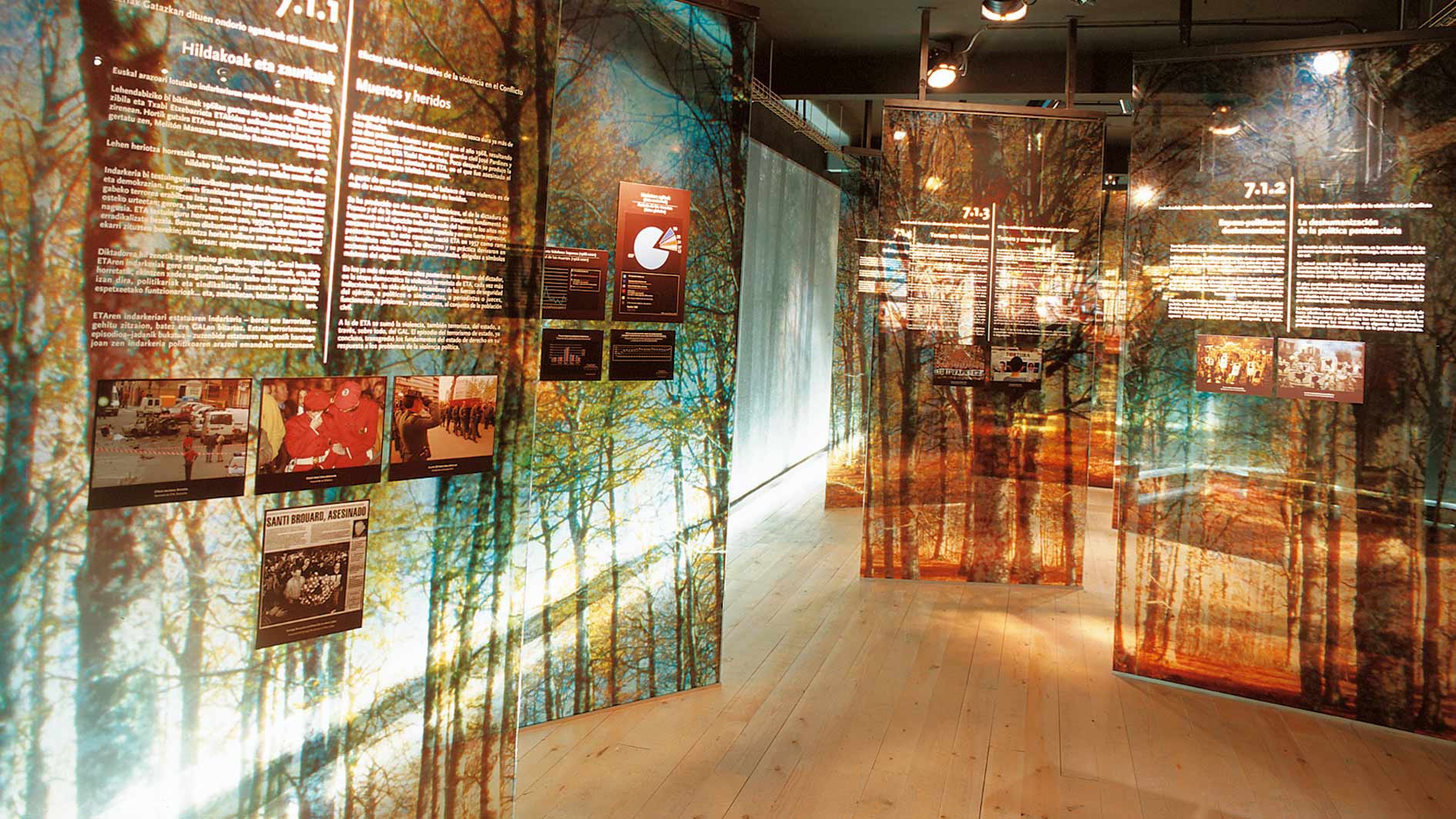No objects are on display in this museum. The subject of this exhibition is a historical event. The greatest difficulty came with depicting an epic story in a space whose scale was domestic, since the museum spaces did not have large dimensions, especially in terms of height.
The second vitally important decision had to do with telling the story from the point of view of someone close to us. And so, after an introduction, the visitor enters the replica of a room, a dining room, reflected in a two-way mirror. A wall clock shows two minutes before the time of the bombing. During this time, we hear the voice of a woman talking about daily life in the town in the period, as a way of involving the visitor emotionally through a female voice that seems familiar and warm. Suddenly we hear the hum of planes, a loud noise and the lights go out. Then the mirror becomes transparent, and behind it we see the rubble of a room in ruins.
Then, in a room with a glass floor, under our feet we see the aerial images of the city of Gernika after bombing. At the end of this room there is a space dedicated to the resolution of the conflict, which provides information on Petra Kelly, who advocated for the German government to issue an official apology for the bombing. The only original piece in the whole museum is exhibited here: a plate decorated with two roses that was half-buried – one of the roses was burned and turned black, while the other remained intact. The decision was made to exhibit only this piece, giving it great prominence, as a symbol of the conflict and of peace.
A circular space was designed, like a chapel or temple, inviting reflection. A projection played images of armed conflicts in the present and a massive block of marble was set up in the centre, like a memorial, a reflection on amnesty and memory. On the upper floor, a room was dedicated to the interpretation of the famous painting by Picasso depicting this terrible historical event – a bombing of the civilian population, a war crime – displayed next to the text of the Declaration of Human Rights, printed on the wall. The last room was dedicated to the Basque conflict: representatives from organizations and associations with diverse political orientations were invited to present their points of view on a series of panels set against the backdrop of a symbolic forest.Institutional sponsor: Gernikako Bakearen Museoa Fundazioa, Government of the Basque Country
Location: Gernika, Euskadi
© Photography: Gernikako Bakearen Museoa

